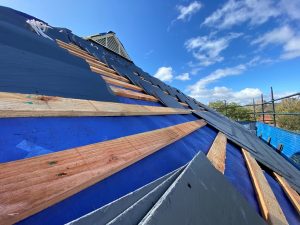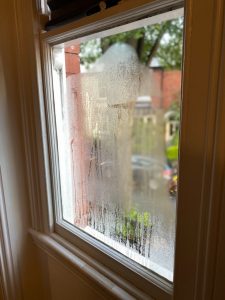Following news of plans to update mould and damp prevention guidance for the housing sector, roofing component manufacturer Klober is imploring housing associations to consider all areas of a property when tackling the build-up of condensation and subsequent mould growth.
The pledge has been made in a new draft Clean Air Strategy set to be launched this year, its main provisions will cover the role of effective ventilation strategies in the reduction of mould formation1. With the audience of the strategy aimed more towards local authorities and public health bodies, Klober is stressing the need for housing providers to select correct ventilation solutions in all areas of the house, including the roof space.
According to experts at Klober, while moisture in the roof is not always evident from the main body of the house, condensation and saturated insulation can lead to staining, and even mould growth, on the ceiling below if effective roof ventilation is not used. Further exacerbated by the introduction of the government’s ECO+ Scheme last winter, which incentivised the installation of insulation in areas including the roof, the risk of condensation is potentially increased because the temperature in the roof space will be colder. 
Nick King, Portfolio Manager at Klober explains: “While many in housing management may be aware of how to mitigate moisture build up in the main body of a property, the roof space is often overlooked. However, if effective roof ventilation isn’t considered mould formation could occur in rooms below. Mould and damp in a property can lead to health risks such respiratory problems, infections and allergies, and the worsening of existing conditions such as asthma.
“Not only is prolonged condensation exposure a big health risk, it can also cause structural issues within the building itself, such as rot. By sourcing effective and regulation compliant roof ventilation solutions to futureproof properties, housing associations can ensure resident wellbeing while preventing costly and time-consuming repairs.”
Typically, condensation season falls between October and April, however due to changes in weather patterns, its occurrence is no longer restricted to this time period. To assist with the specification of effective and regulation-compliant products which protect the roof space against moisture build-up, Klober continually invests in its research and development (R&D). 
“Roof tile vents and eaves ventilation are ideal solutions for providing healthy air flow to the roof space to reduce moisture build up,” adds Nick, “The role of the membrane should also be considered. In this case low resistance, breathable membranes can assist in the ventilation process as their permeable nature allows water vapour to escape through the roof, reducing condensation while also protecting against water ingress.
“Taking this one step further, the most breathable options are air open membranes, such as our Permo Air 160 – which is the UK’s most breathable, BBA (British Board of Agrément) approved membrane. Air open membranes can negate the need for additional ventilation entirely due to the clever technology which allows air as well as vapour to pass through the membrane.”
For further information on the recommended ventilation requirements, click here.

